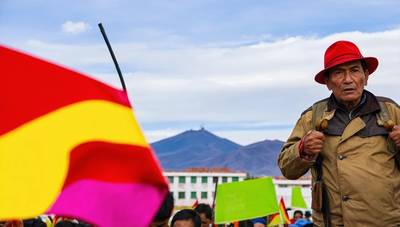Bolivia's runoff elections: What you should know
Bolivia will hold its presidential runoff on the 19th of October after no candidate won the first round on August 17.
The first-round results were a shocking blow to the Movement to Socialism (MAS) party, who had dominated South America's politics for nearly 20 years.
The fragile economy is top of mind for the voters. The once abundant natural gas exports are now in decline, the inflation rate is at an all-time high and fuel is scarce.
On November 8, the new President takes office.
Here is a guide for the elections:
What's at Stake?
The new term of MAS's presidency, whoever wins the runoff will be the last for the party, which has ruled almost continuously since 2005. Former President Evo Morales founded MAS, a leftist icon who enjoyed massive support among Bolivia's Indigenous population.
In the runoff, Senator Rodrigo Paz of the center will face former President Jorge "Tuto", who is conservative. Both candidates want to reverse the state-led, MAS-era model but their goals differ.
Both countries have pledged to strengthen ties with Washington, after spending nearly 20 years under socialist governments more aligned with Russia, China and Iran.
Bolivia is facing its worst economic crisis for decades. The country has been hit by high inflation, dollar shortages and fuel shortages. State revenues have also declined.
How does the election work?
Bolivia's Electoral Tribunal launched a new system in this year to respond to claims of fraud made following the 2019 Presidential vote, which led to widespread unrest as well as the resignation then-President Morales.
The new system will allow voters to photograph their ballots at the polling station and send them directly to the counting centers. The process will be overseen by international observers from the European Union, Organization of American States and other countries.
The polls will open at 8 am (1200 GMT) until 4 pm (2000 GMT). The tribunal will publish at least 80% of the preliminary results by election night. The official results must be submitted within seven days.
Who are the candidates and what is their platform?
According to opinion polls, the race is likely to be close.
Quiroga is slightly in front. He's 65 and a conservative. Quiroga was briefly president of the United States from 2001-2002. Juan Pablo Velasco is his running mate, a tech executive who reinforces the pro-business message of the party. Quiroga’s platform includes expanding the free trade, cutting expenditures, and restoring rights to private property.
Paz is a 58-year old centrist, son of a former President. Edman Lara is a former police officer turned social media activist who has inspired some younger voters. They have a number of proposals, including decentralizing government and promoting the private sector growth while maintaining social programs.
Paz surprised everyone by winning the first-round with 32% in a crowded race. Quiroga secured 27%.
WHAT COULD THE ELECTION MEAN FOR LITHIUM PRODUCTION?
Bolivia's salt flats contain the largest lithium reserves in the world, but it has struggled for years to increase production and develop commercially viable resources.
Russian and Chinese firms are among those that have made development proposals. However, the deals have stalled in the legislature due to political infighting.
Investors are hoping that one of the two finalist candidates will ease regulations and increase access to deposits which have been largely untapped.
(source: Reuters)





